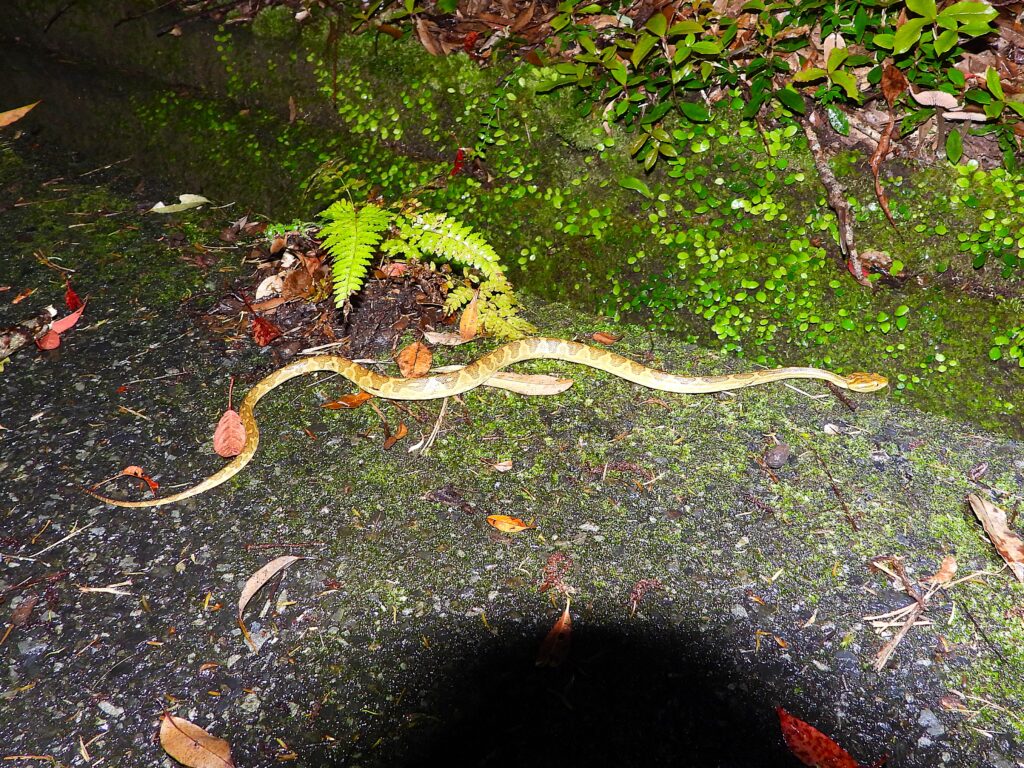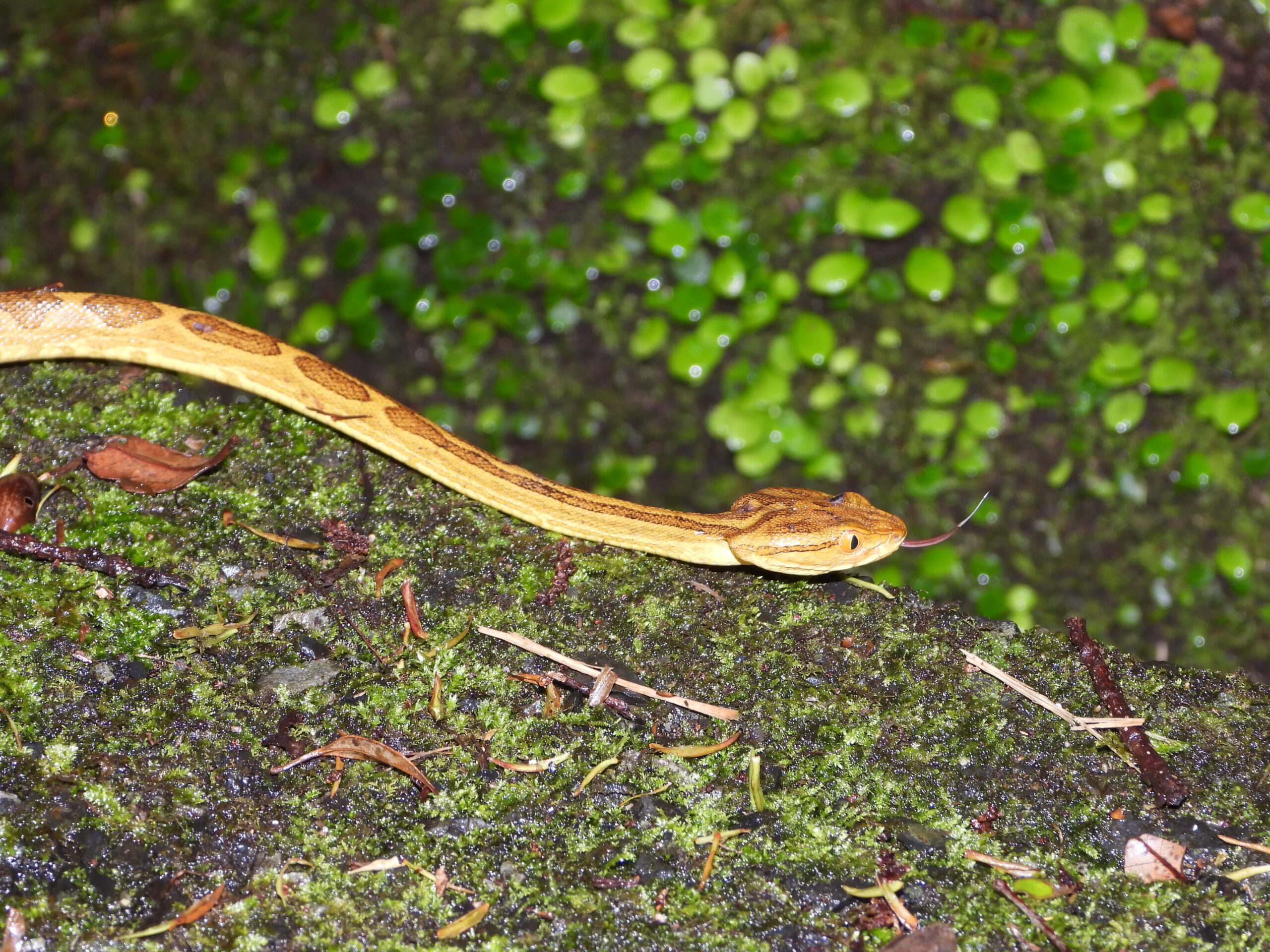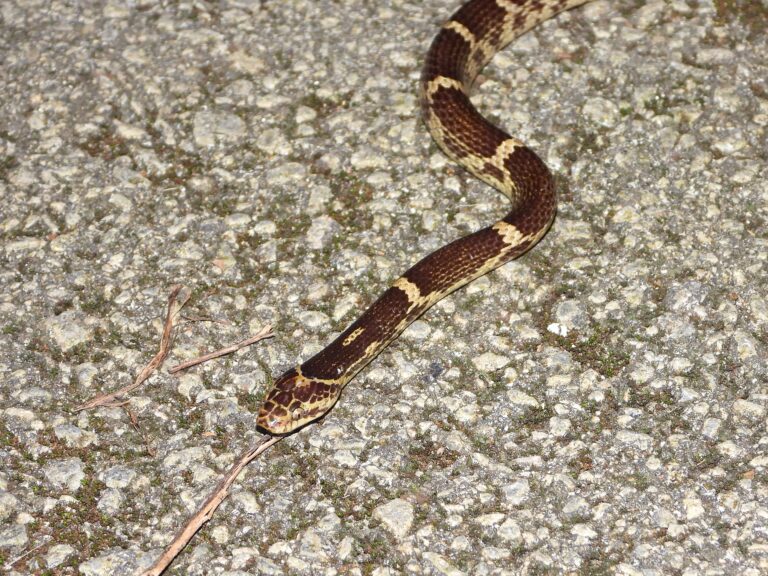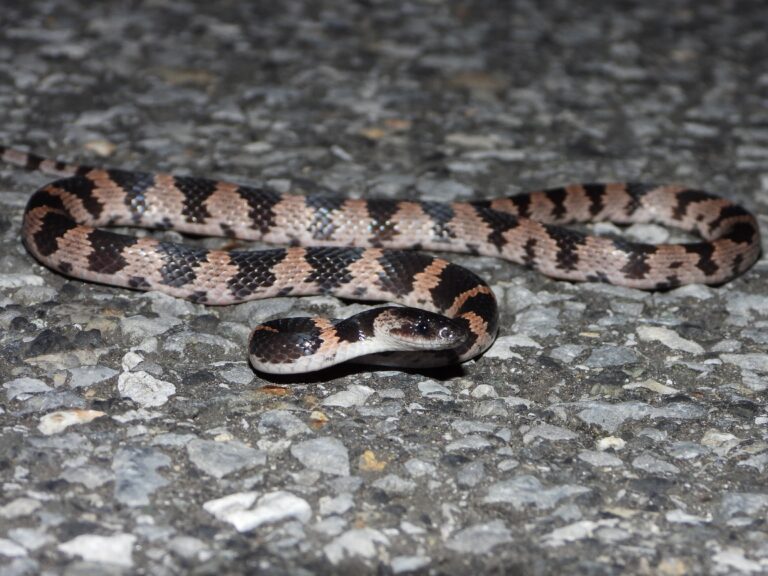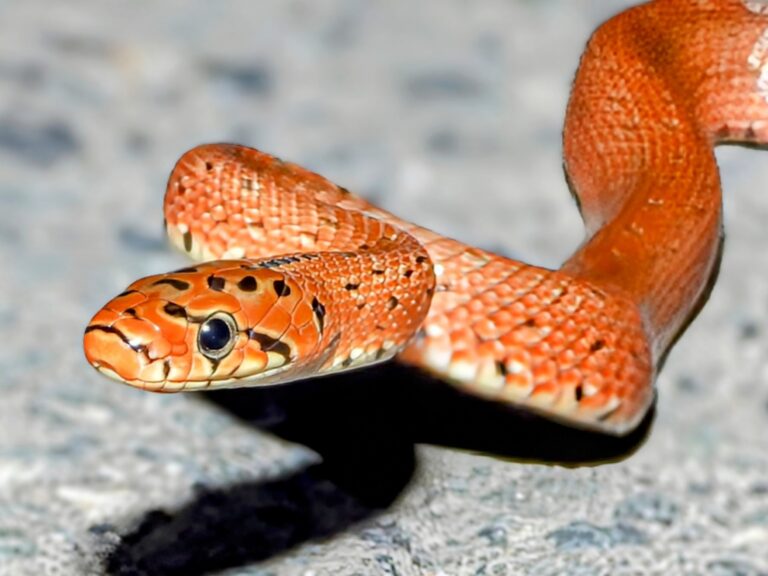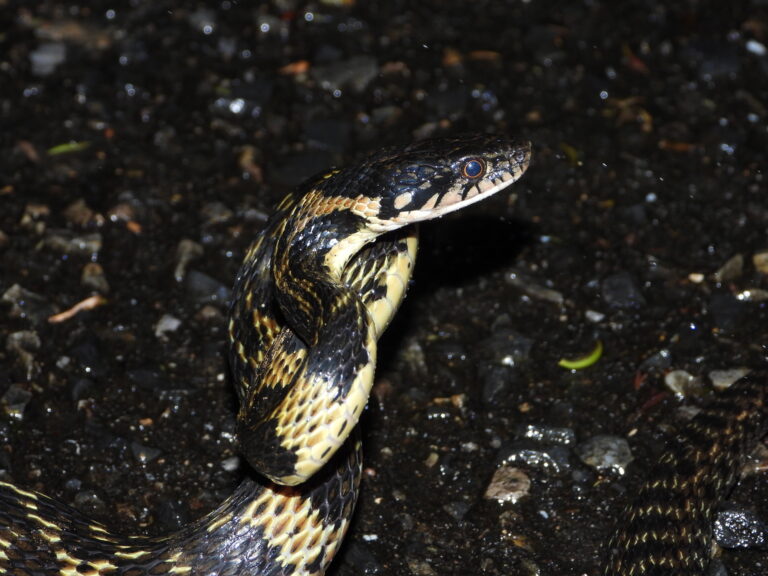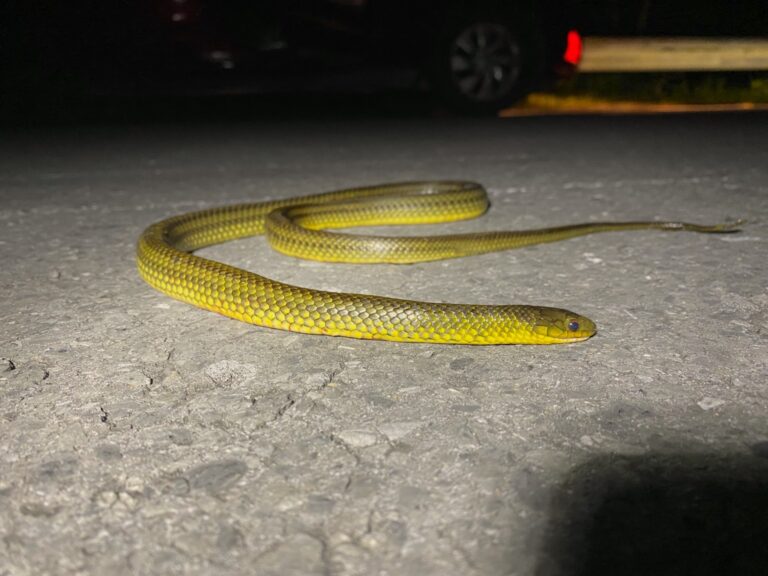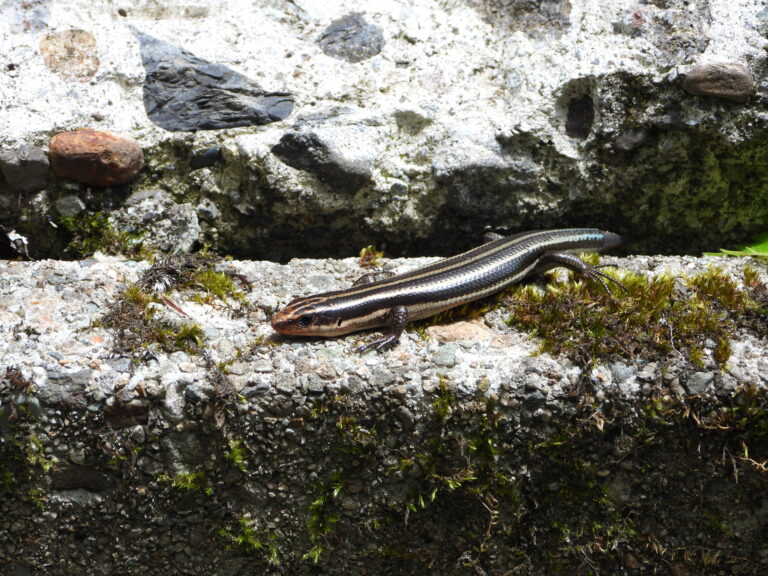Habu (Protobothrops flavoviridis) – Wildlife of Japan
Introduction
The Habu is a large, highly venomous pit viper endemic to Japan’s Ryukyu Islands, including Okinawa and the Amami Islands. It plays a notable ecological role as both predator and potential hazard in rural areas. While its venom once caused many fatalities, modern medical treatment and the availability of antivenom have made deaths extremely rare today. The Habu has also become an iconic species in Okinawan culture, famously used in “habushu,” a type of snake-infused awamori liquor.
Appearance
Adult Habu typically measure between 120 and 150 cm, with exceptional specimens reaching 240 cm. The body is olive-brown with dark, irregular blotches outlined in yellow, giving a wavy, camouflaged appearance. The belly is pale, and the head is large, triangular, and distinct from the neck. The fangs are long—up to 2 cm—and capable of delivering a powerful hemotoxic bite that causes local tissue destruction.
Habitat & Distribution
This species inhabits the central and southern Ryukyu Islands, such as Okinawa, Amami Oshima, and Tokunoshima. It prefers transitional zones between forests and farmlands, rocky slopes, stone walls, and even old tombs or caves. Because it preys on rodents, the Habu sometimes ventures into villages and houses at night. It is generally found on larger volcanic islands rather than small coral islands.
Behavior
The Habu is mainly nocturnal and terrestrial but may climb low vegetation or walls while hunting. It actively searches for prey and can strike with impressive speed and reach. When disturbed, it often assumes a defensive “S-shaped” posture, hissing before delivering a rapid strike. Encounters with humans occur mostly in warm, humid seasons when both snakes and people are active outdoors at night.
Diet
Its primary prey consists of rodents such as rats and mice, but it also consumes birds, lizards, and frogs. By controlling rodent populations, the Habu provides an ecological benefit despite its danger to humans. In agricultural settings, it may follow rodent trails into human buildings, which is why most bites occur around homes and storage sheds.
Reproduction
Unlike many pit vipers, the Habu is oviparous—it lays eggs instead of giving birth to live young. Mating occurs in early spring, and females deposit up to about 18 eggs in summer. The eggs hatch after roughly six weeks, and juveniles already display the same color pattern as adults. The species reaches sexual maturity at around two to three years of age.
Conservation
The Habu is listed as Least Concern by the IUCN due to its wide distribution and stable population. However, human persecution, road mortality, and habitat loss still pose localized threats. Historical attempts to reduce Habu populations, such as the introduction of mongooses to Okinawa and Amami, caused serious ecological damage by harming native wildlife.
Recent studies have also detected persistent organic pollutants in Habu tissues near military facilities, suggesting its usefulness as a bioindicator of environmental contamination.
Author’s Impression
I once encountered a Habu in the mountains of Amami Oshima. It was coiled around a tree branch, perfectly camouflaged, and I realized that if I hadn’t noticed it in time, I might have been bitten. The experience reminded me how easily these snakes blend into their surroundings and how cautious one must be when exploring the forests of Okinawa and Amami. Always pay close attention when walking in the mountains—habu are silent, but they are there.
